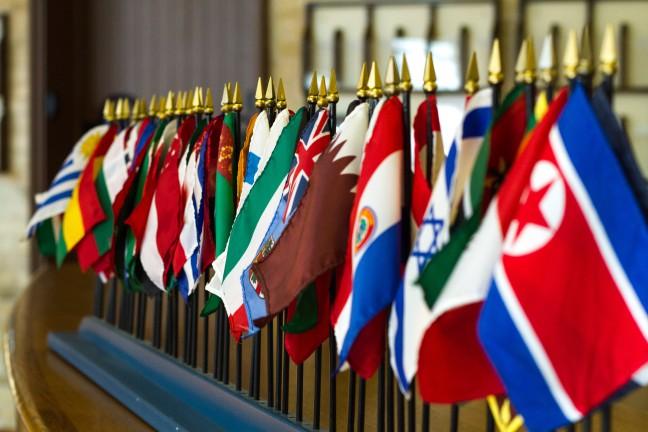While fewer international students are choosing to pursue professional degrees in the United States, the University of Wisconsin is an exception to the national trend.
According to a report by the Council of Graduate Schools, enrollment among international graduate students is down for the second year, but there has been a slight increase in enrollment at UW. The research institution saw an increase in international graduate student enrollment from fall 2016 to fall 2017, with a rise from 671 students to 725.
Parmesh Ramanathan, Associate Dean for the UW Graduate School, said pinpointing an exact reason as to why UW is bucking the trend in international student enrollment is hard, but he hopes it has something to do with the unique programs and opportunities offered at UW.
“We have been increasing the number of masters programs targeted towards international students,” Ramanathan siad. “The programs are designed to attract the interest of students working towards professional degrees.”
Roopa Rawjee, Assistant Dean of Students and Director of International Student Services, said international students are focused in many areas of study. Every year the university sees an ebb and flow of majors depending on students and their interests, she said.
Because UW is known for its high quality of education as a research institution and professional school — a factor that international students are keenly aware of — research focused degrees in sciences, education, business and economics are common, Rawjee said.
The institution’s location, how it ranks among other schools and the cost of living and tuition are all additional factors that international students weigh when considering whether to pursue a degree in the U.S., Rawjee said.
“Madison wins out by far in terms of cost effectiveness and in terms of education,” she said.
While the Council of Graduate Schools did not identify one specific reason for the nationwide decline in international graduate students, there is speculation that the U.S.’s current political climate and immigration policies may be a deterrent for prospective students.
Recent news articles about restrictions on travel and employment authorization have caused concern for international students and their families about investing in an American education, Rawjee said. Students see a lot of negative press about immigration, and many would rather study in countries where they feel safe and are offered better opportunities.
Ramanathan acknowledged that US politics may have something to do with the decline, but also pointed to the availability of visas and the cost of living in the U.S. as other possible impediments.
“If they choose to study in the U.S., many students have to come on visas that do not allow them to work,” he said. “Many have to support families based on fellowship or assistantships from the university they study at.”
Securing a visa and supporting a life in the U.S. are just some of the many challenges international students face. While many challenges are similar to those of domestic students, including health, finances and family responsibilities, being uprooted from their home country can pose additional challenges, like adjustment to American culture and English language proficiency, Rawjee said.
Rawjee explained that some international students feel added pressure and responsibility, as individual achievement and success is tied to family in many international cultures.
Because of these factors, international students tend to be very focused, hard-working and less involved in extracurricular activities, Rawjee said.
“We see many international students who do not fit into [this] stereotype,” though, Rawjee said. “We continue to see smart, talented, motivated students who are engaged in many activities and take advantage of many opportunities available at UW Madison.”
Post-graduation plans are also necessary for international students to consider, as they must decide whether to return home or stay and work in the U.S., Rawjee explained. The decision to return home for work is highly dependent on the economy in an individual student’s home country, she said, and how difficult it will be to get employment authorization in the U.S.
“Student’s do not want to struggle,” Rawjee said. “They will go where they have the best opportunity.”
According to Rawjee, total UW international graduate and undergraduate students come from 130 countries, with many coming from China. Other top countries include Malasia, India, South Korea and Indonesia.


